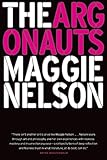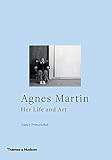

 At the beginning of the year I was finishing a book, and at the end I was starting to think tentatively about another one, and in between I was making a concerted effort to rediscover reading for pleasure, so one way or another this really has been a year in reading. Heavy reading (A Little Life by Hanya Yanagihara), light reading (a spree of memoirs about Freddie Mercury), nourishing reading (Derek Jarman’s Garden), shallow reading (The Andy Warhol Diaries). I built new shelves, and painted them too, so there was at least a month without book piles, though it didn’t take long for buying to exceed capacity.
At the beginning of the year I was finishing a book, and at the end I was starting to think tentatively about another one, and in between I was making a concerted effort to rediscover reading for pleasure, so one way or another this really has been a year in reading. Heavy reading (A Little Life by Hanya Yanagihara), light reading (a spree of memoirs about Freddie Mercury), nourishing reading (Derek Jarman’s Garden), shallow reading (The Andy Warhol Diaries). I built new shelves, and painted them too, so there was at least a month without book piles, though it didn’t take long for buying to exceed capacity.
In retrospect, I’ve been voyaging thematically. Number one: the art of collage. One of the central questions of my new book, The Lonely City, is about brokenness and wholeness: how a self might end up in pieces, and how that sense of sundering might be medicated or treated, particularly by way of art. I was interested in artists like Henry Darger, who concentrated on collage, and in using psychotherapists like Donald Winnicott and Melanie Klein to think about what that kind of work might be doing.

 No doubt this is part of why I responded so explosively to Maggie Nelson’s The Argonauts (Graywolf Press). A work of collage in its own right, it also thinks deeply and with immense nuance and grace about division and completion, about how we make boundaries and categories and what happens when we cross over, or are more than one thing at the same time. An instruction manual for the art of being both, you might say, which brings me to another book of parts. Ali Smith’s magnificently curious and mobile How to Be Both (Hamish Hamilton) is a novel in two halves that circles in on itself like a mobius strip. You don’t often hear Nelson and Smith discussed in the same breath, but it seems to me they’re up to something of the same business: finding new forms for thinking about sexuality and selfhood, evading or exploding categories, and reveling in language while they do so.
No doubt this is part of why I responded so explosively to Maggie Nelson’s The Argonauts (Graywolf Press). A work of collage in its own right, it also thinks deeply and with immense nuance and grace about division and completion, about how we make boundaries and categories and what happens when we cross over, or are more than one thing at the same time. An instruction manual for the art of being both, you might say, which brings me to another book of parts. Ali Smith’s magnificently curious and mobile How to Be Both (Hamish Hamilton) is a novel in two halves that circles in on itself like a mobius strip. You don’t often hear Nelson and Smith discussed in the same breath, but it seems to me they’re up to something of the same business: finding new forms for thinking about sexuality and selfhood, evading or exploding categories, and reveling in language while they do so.
Speaking of which, The Dictionary of Lost Languages is an A to Z of languages that are for one reason or another either extinct or under threat, from Jailic, the pidgin Gaelic IRA political prisoners taught themselves in the Maze, to Umbugarla, lost for good with the death of its last speaker, Butcher Knight. The Dictionary was made by the artist and filmmaker Sarah Wood as a public commission, with copies inserted into each of Cambridge’s public libraries (a very small run is for sale here). Considering that the loss of a language is almost always related to the destruction of a people, whether by war, imperialism, genocide, or globalization, it should make for depressing reading. And yet it’s imbued with an infectious faith in language’s capacity to regenerate and return, and is one of the most heartening and exciting things I’ve read all year (I’m very proud to have contributed an entry on the artist David Wojnarowicz).
Two more suggestions on the art-language axis. The poet Ian Patterson, also a Cambridge professor and translator of Marcel Proust, has just published Time Dust (Equipage), a volume of poems inspired by or written in response to the work of the artist Siân Bowen. A little reminiscent of John Ashbery or J.H. Prynne, and full of double meanings and retractions, this is language folded in upon itself, moody, wonderful, on the threshold of abstraction.
If Patterson has a counterpart in the visual, it’s the painter Matt Connors, whose luminous A Bell Is a Cup (Rainoff) seems to be turning over similar question by way of color and form, and who likewise inserts ripples of unease into what look at first glance like radiant surfaces. With its fabulous rainbow hues, A Bell also wins the prize for the most beautiful book I bought this year.
Another running thread I’ve been thinking about is long-term creativity. How do you keep making art, book after book, decade after decade? What really constitutes success? If you want to survive, you have to ask these questions, and to find answers that are robust and engaging, because if it’s just about critical or market approval you’d go completely crazy. You have to let yourself fail and fuck up, and you have to be able to make bad or messy or otherwise hopeless things on the way to good ones. (I’m writing this in a backyard in New Hampshire accompanied by two dogs and a merlin. Took a break a minute ago to attend to a hive being readied for the winter. I’m all for reading, but sometimes you just need to sit in the sun with a beer and feel the earth swing on its axis).

 Anyway, what got me thinking about all this, asides from heading towards 40, was a commission to write about the minimalist painter Agnes Martin, who didn’t really get going until she was in her 40s, and who finished her last painting weeks before her death at the age of 92. Two terrific books about Martin came out this year: Nancy Princenthal’s biography Agnes Martin: Her Life and Art (Thames and Hudson) and a catalogue for the Tate retrospective, edited by Frances Morris and Tiffany Bell, which is full of intensely interesting and thought-provoking essays on closets, grids, withdrawal, persistence, and repetition. My favorite of the bunch is Agnes Martin: Paintings, Writings, Remembrances by Martin’s friend and gallerist Arne Glimcher (Phaidon). It combines scraps of her own writing with beautiful recollections about her defiant, difficult, and isolated life in New Mexico, and the extraordinary things she made there. Martin is something of a guiding light for me right now and will be central in my next book, for sure.
Anyway, what got me thinking about all this, asides from heading towards 40, was a commission to write about the minimalist painter Agnes Martin, who didn’t really get going until she was in her 40s, and who finished her last painting weeks before her death at the age of 92. Two terrific books about Martin came out this year: Nancy Princenthal’s biography Agnes Martin: Her Life and Art (Thames and Hudson) and a catalogue for the Tate retrospective, edited by Frances Morris and Tiffany Bell, which is full of intensely interesting and thought-provoking essays on closets, grids, withdrawal, persistence, and repetition. My favorite of the bunch is Agnes Martin: Paintings, Writings, Remembrances by Martin’s friend and gallerist Arne Glimcher (Phaidon). It combines scraps of her own writing with beautiful recollections about her defiant, difficult, and isolated life in New Mexico, and the extraordinary things she made there. Martin is something of a guiding light for me right now and will be central in my next book, for sure.
 Another category: things that aren’t out in the world yet. First up: Amy Liptrot’s The Outrun (Canongate), a memoir by a young writer about overcoming alcoholism, in part by returning to the isolated Scottish island where she grew up. It’s wild writing: sexy, unguarded, raw, and ardent. Out January, and highly recommended.
Another category: things that aren’t out in the world yet. First up: Amy Liptrot’s The Outrun (Canongate), a memoir by a young writer about overcoming alcoholism, in part by returning to the isolated Scottish island where she grew up. It’s wild writing: sexy, unguarded, raw, and ardent. Out January, and highly recommended.
I’ve been reading Jeremy Atherton Lin’s blog Leaves for years, and now he’s putting together a memoir, tentatively titled The Sun and the Air, about growing up in California and being obsessed with The Smiths. He’s one of the best writers I’ve encountered, remaking the world sentence by immaculate sentence, and he’s got a particular knack for zooming in on microscope details — an earring, say — and using them to sally outward on a dérivé through cultural and emotional landscapes. He’s better at this than almost anyone I’ve come across, and I hope the book finds a home soon, because I want to read it.
More from A Year in Reading 2015
Don’t miss: A Year in Reading 2014, 2013, 2012, 2011, 2010, 2009, 2008, 2007, 2006, 2005
The good stuff: The Millions’ Notable articles
The motherlode: The Millions’ Books and Reviews
Like what you see? Learn about 5 insanely easy ways to Support The Millions, and follow The Millions on Twitter, Facebook, Tumblr.









